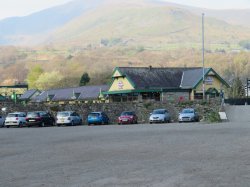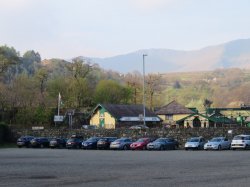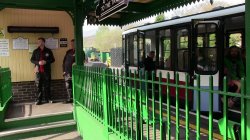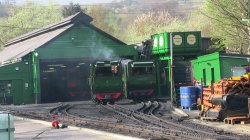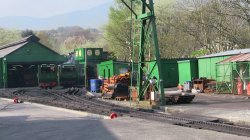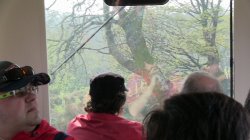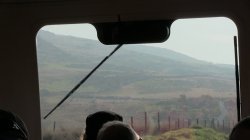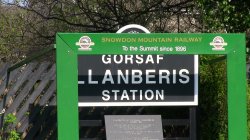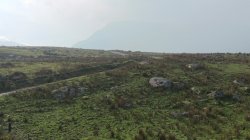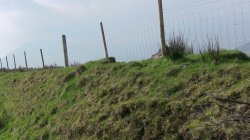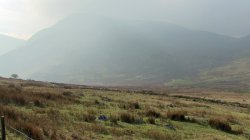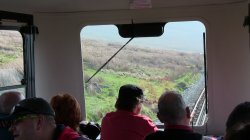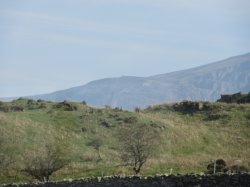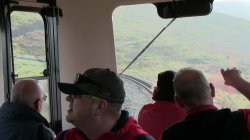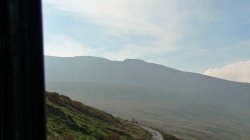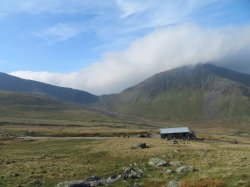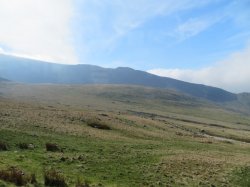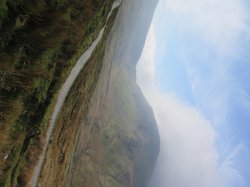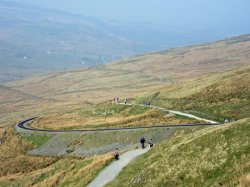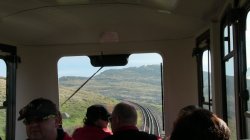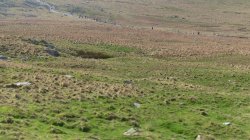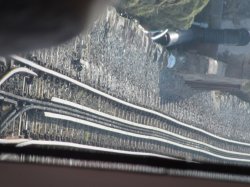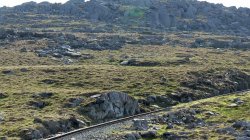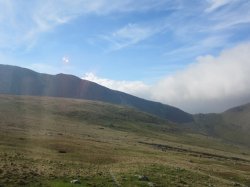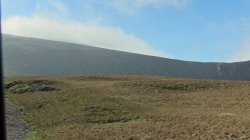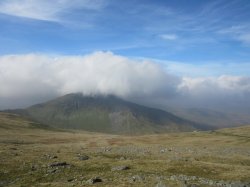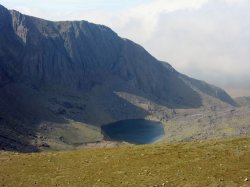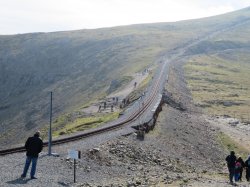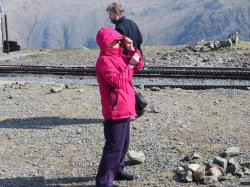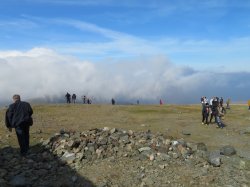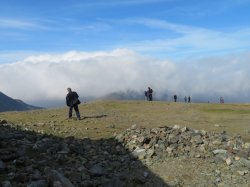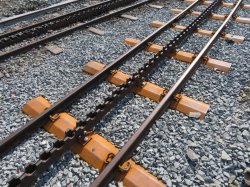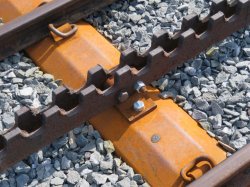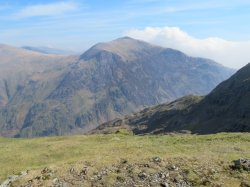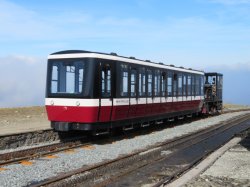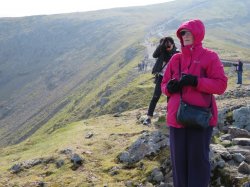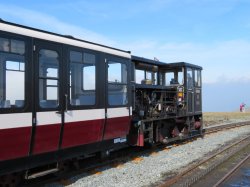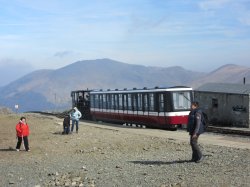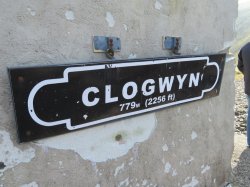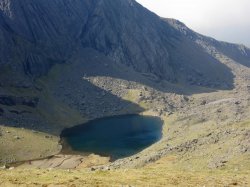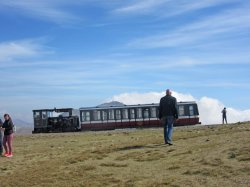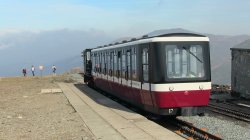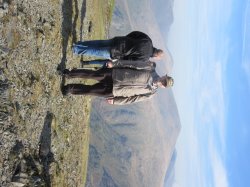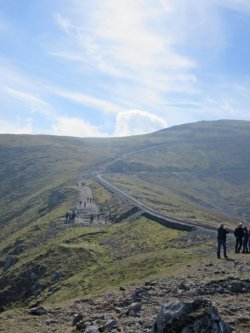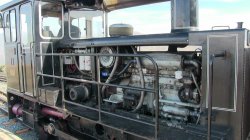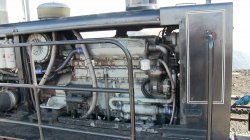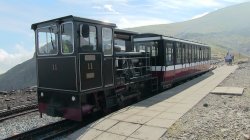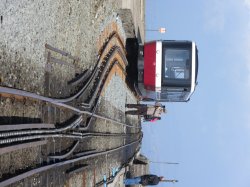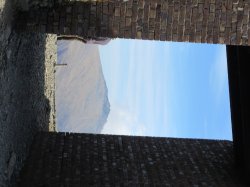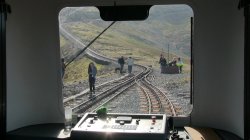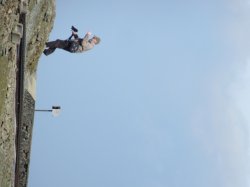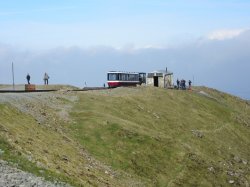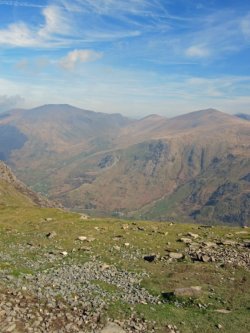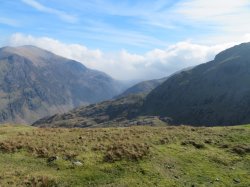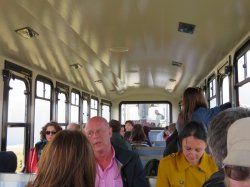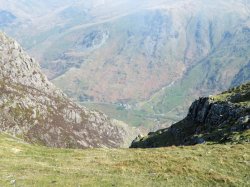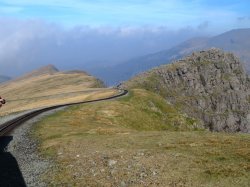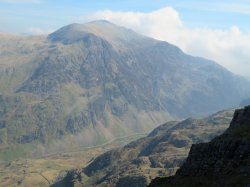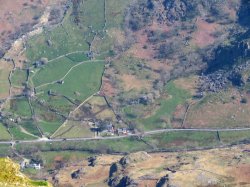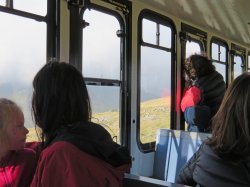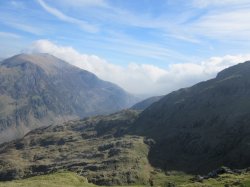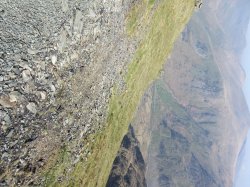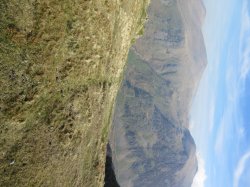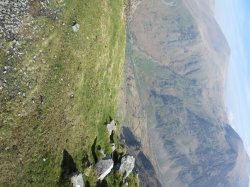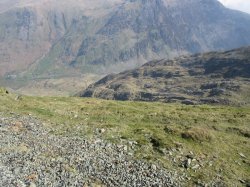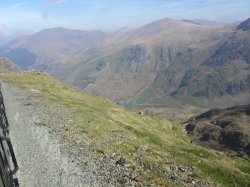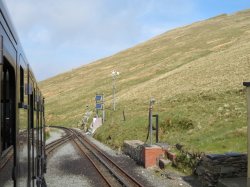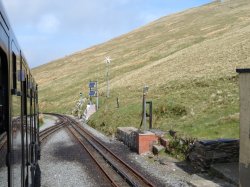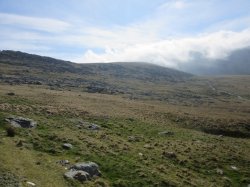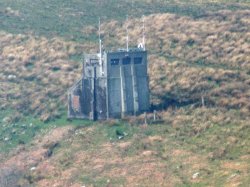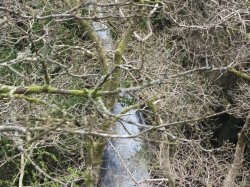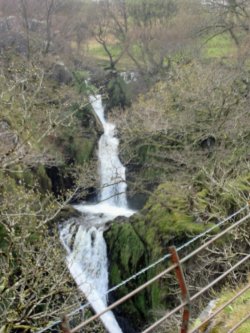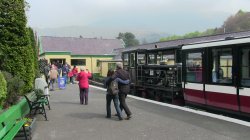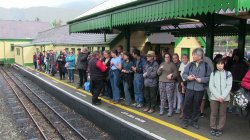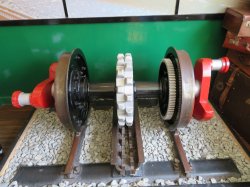 SNOWDON MOUNTAIN RAILWAY - Llanberis
SNOWDON MOUNTAIN RAILWAY - Llanberis
The Snowdon Mountain Railway (SMR; Welsh: Rheilffordd yr Wyddfa) is a narrow gauge rack and pinion mountain railway in Gwynedd, north-west Wales. It is a tourist railway that travels for 4.7 miles (7.6 km) from Llanberis to the summit of Snowdon, the highest peak in Wales.
The SMR is the only public rack and pinion railway in the United Kingdom, and after more than 100 years of operation it remains a popular tourist attraction, carrying more than 140,000 passengers annually. The line is owned and operated by Heritage Great Britain, operators of several other tourist attractions in the United Kingdom.
The railway is operated in some of the harshest weather conditions in Britain, with services curtailed from reaching the summit in bad weather and remaining closed during the winter from November to mid-March. Single carriage trains are pushed up the mountain by either steam locomotives or diesel locomotives. It has also previously used diesel railcars as multiple units. The railway has two new hybrid locomotives on order, for introduction at the start of the 2020 season.
The SMR was the inspiration for the fictional Culdee Fell Railway, appearing in the book Mountain Engines, part of The Railway Series written by Reverend W. Awdry.
CONSTRUCTION
The idea of a railway to the summit of Snowdon was first proposed in 1869, when Llanberis was linked to Caernarfon by the London & North Western Railway. In 1871 a Bill was put before Parliament, applying for powers of compulsory purchase for a railway to the summit, but it was opposed by the local landowner, Mr Assheton-Smith of the Vaynol Estate, who thought that a railway would spoil the scenery.
For two decades nothing happened, and Assheton-Smith remained opposed to any plans. However, in 1893 the Rhyd Ddu terminus of the North Wales Narrow Gauge Railways was renamed Snowdon, attracting many of the tourists who previously visited Llanberis and affecting the livelihoods of the accommodation providers who were Assheton-Smith tenants.
After much persuasion Assheton-Smith ultimately gave his assent to the construction of a railway to the summit,[3] and though still the principal landowner in the area, he was not a major influence in the company. However, no Act of Parliament was now required, as the line was built entirely on private land obtained by the company, without any need for the power of compulsory purchase. This was unusual for a passenger-carrying railway, and also meant that the railway did not come under the jurisdiction of the Board of Trade.
The railway was constructed between December 1894, when the first sod was cut by Enid Assheton-Smith (after whom locomotive No. 2 was named), and February 1896, at a total cost of £63,800 (equivalent to £7,437,000 in 2019). The engineers for the railway were Sir Douglas Fox and Mr Andrew Fox of London, and the contractors were Messrs Holme and King of Liverpool. By April 1895 the earthworks were 50% complete, a sign of the effort put into the construction work as much as of the lack of major earthworks along much of the route.
All tracklaying had to start from one end of the line, to ensure the rack was correctly aligned; so although the first locomotives were delivered in July 1895 very little track was laid until August, when the two large viaducts between Llanberis and Waterfall were completed. Progress up the mountain was then quite rapid, with the locomotives being used to move materials as required. Considering the exposed location and possible effects of bad weather, it is surprising that the first train reached the summit in January 1896. As the fencing and signals were not then ready, the opening was set for Easter.
OPENING
The line was opened at Easter 1896. In anticipation of this, Colonel Sir Francis Marindin from the Board of Trade made an unofficial inspection of the line on Friday 27 March. This included a demonstration of the automatic brakes. He declared himself satisfied with the line, but recommended that the wind speed be monitored and recorded, and trains stopped when the wind was too strong.
On Saturday 4 April a train was run by the contractor consisting of a locomotive and two coaches. On the final section, the ascending train hit a boulder that had fallen from the side of a cutting and several wheels were derailed. The workmen on the train were able to rerail the carriage and the train continued.
The railway was officially opened on Monday 6 April 1896, and two trains were dispatched to the summit. On the first return trip down the mountain, possibly due to the weight of the train, locomotive No. 1 Ladas with two carriages lost the rack and ran out of control. The locomotive derailed and fell down the mountain. A passenger died from loss of blood after jumping from the carriage.[12] After a miscommunication the second downward train hit the carriages of the first, with no fatalities.
For further details visit the website - www.snowdonrailway.co.uk
Click Picture to Zoom
 SNOWDON MOUNTAIN RAILWAY - Llanberis
SNOWDON MOUNTAIN RAILWAY - Llanberis
